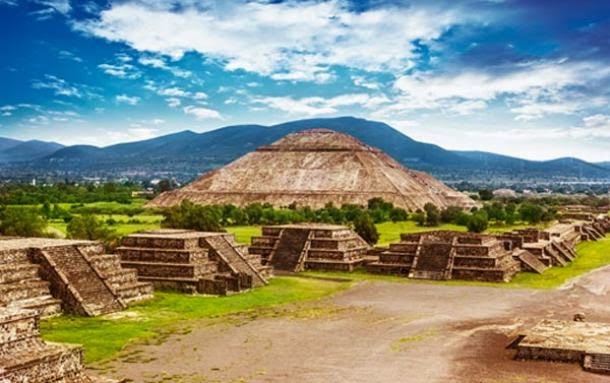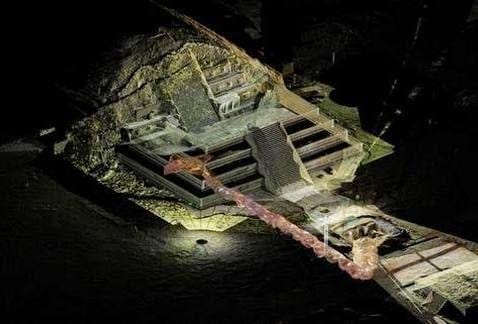Secret Tunnel Under Teotihuacan Pyramid May Lead To Royal Tombs
Mexican archaeologists have announced that a years-long exploration of an underground tunnel beneath the ancient city of Teotihuacan in Mexico has yielded thousands of artefacts and may lead to royal tombs.
According to a news release on Reuters, the entrance to the 1,800-year-old tunnel was first discovered in 2003, and an extensive project involving both human researchers and remote-control robots has been ongoing ever since.
The tunnel is located approximately 18 meters below the Temple of the Feathered Serpent, the third largest pyramid at Teotihuacan, which flourished between 100 BC and 750 AD.
The ancient city of Teotihuacan, which is located about 30 miles (50 km) northeast of Mexico City, is one of the largest and most important sacred cities of ancient Mesoamerica, whose name means “the city of the gods” in the Nahuatl language of the Aztecs.

It once supported an estimated population of 100,000 – 200,000 people, who raised giant monuments such as the Temple of Quetzalcoatl and the Pyramids of the Sun and the Moon.
However, much about Teotihuacan remains unknown, including the origin and language of the people who lived there, as they did not leave behind any written records.

Project leader Sergio Gomez said researchers recently reached the end of the 340-foot (103-meter) tunnel, within which they found an estimated 50,000 objects, including finely carved stone sculptures, jewellery, shells, and animal bones, seeds, obsidian blades and arrowheads.
The tunnel was full of remnants of pyrite or magnetite, a metal not found in the area, which was brought to Teotihuacan and milled. It was used to paint the roof, giving it a sparkling effect.
They also found more than 300 metal spheres, of unknown purpose.

“The Tunnel is the metaphorical representation of the conception of the underworld,” said Gomez. In the middle of the tunnel, three chambers were found that could hold more important finds. A large offering found near the entrance to the chambers, suggests they could be the tombs of the city’s elite.
“Due to the magnitude of the offerings that we’ve found, it [royal tombs] can’t be in any other place,” said Gomez, who speculates that they may find some of the most powerful rulers of the pre-Hispanic world.
Archaeologists have never found any remains believed to belong to the rulers of Teotihuacan.
Such a discovery would be monumental, as it would lead light on the hierarchical structure of the city and whether the rule was hereditary.
The chambers have not yet been excavated; the full exploration will take at least another year.





